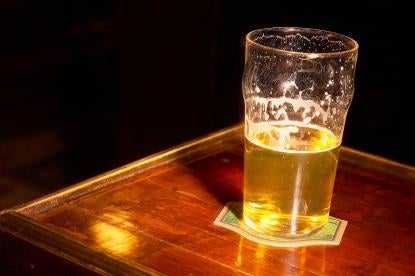Trademark dilution is a concept not easily understood. Although we have written about this topic previously, a recent decision by the Trademark Trial and Appeal Board, ESRT Empire State Building, L. L. C. v. Michael Liang, Opposition No. 91204122 (TTAB June 17, 2016), may help to further explain why it is unacceptable to dilute another’s trademark.
In this case, an individual filed an application to register a logo mark which the Applicant described as incorporating “a building resembling the Empire State Building.” The mark was to be used on different types of beer products.
The application was opposed by the owner of two registrations for a logo mark which consisted of an illustration of the Empire State building, which were registered for use in providing entertainment services and real estate services.
The Opposer asserted a claim of “dilution by blurring” against the beer application directed to the use of a rendition of the Empire State building in the applied-for logo.
The Trademark Act was amended in recent years to include a cause of action for dilution of famous marks. Section 43(c) of the Act provides that an owner of a famous mark that is distinctive, either inherently or through acquired distinctiveness, may enjoin a third party’s use of a mark that is likely to cause dilution by blurring or dilution by tarnishment of the famous mark regardless of whether there is actual or likely confusion between the marks, competition between the marks, or any actual economic injury by the owner of the famous mark. “Dilution by blurring” is statutorily defined as an “association arising from the similarity between the mark or trade name and a famous mark that impairs the distinctiveness of the famous mark.” In other words, dilution diminishes the selling power that a distinctive mark or name has developed in the minds of the consuming public due to its association with a product or service that may or may not be of the type provided by the owner of the famous mark. As the Board in this case explained, dilution by blurring occurs “when a substantial percentage of consumers, upon seeing the junior party’s use of the mark on its goods, are immediately reminded of the famous mark and associate the junior party’s use with the owner of the famous mark, even if they do not believe that the goods come from the famous mark’s owner.”
The US Court of Appeals for the Federal Circuit requires that the following four elements be proven for a successful claim of dilution by blurring:
-
plaintiff owns a famous mark that is distinctive;
-
defendant is using a mark in commerce that allegedly dilutes the plaintiff’s famous mark;
-
defendant’s use of the mark begin after the plaintiff’s mark became famous; and
-
defendant’s use of its mark is likely to cause dilution by blurring.
In the subject case, the Board found that the evidence supported a finding that Opposer’s Empire State building design mark had been famous for purposes of a dilution claim well before the filing date of the Applicant’s intent to use application, that it met the distinctiveness requirements for a dilution claim, that Opposer had maintained substantially exclusive use of its mark, and that there was a strong degree of public recognition of the mark. The Board did not find any evidence to support a finding that the Applicant had intended to create an association with Opposer’s mark or that there had even been any opportunity for any actual association to occur given the fact that the mark had not yet been placed into use. Nevertheless, intent to dilute is not required for proof of dilution, and the Board held that, on balance, the evidence supported a finding of dilution by blurring. It therefore sustained the opposition and refused registration of Applicant’s mark.
The lesson here, once again, is not to use all or part of a famous mark, whether it consists of words and/or a design. While it is true that it is often not clear whether or not a mark would reach the level of fame necessary for a successful dilution claim to be asserted, there are some marks which just scream “fame.” These are the marks you should never even think of using, whether or not your business is similar to or in competition with the business of the famous trademark owner. Go in a different direction. Be creative. Be unique. Develop your own fame, notoriety, and reputation through your own distinctive, one-of-a-kind trademark. You will never regret it.




 i
i

